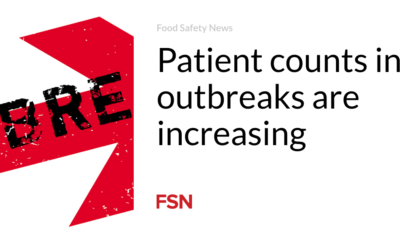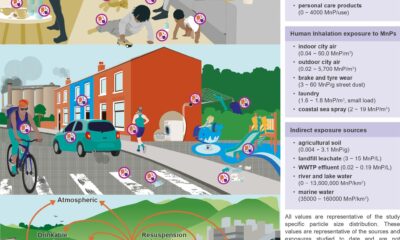Food
The most important food-related diseases are increasing in Norway

E. coli infections reached a record high in Norway in 2023, while other pathogens are returning to pre-coronavirus pandemic levels.
Data published by the Norwegian Institute of Public Health (FHI) shows that the number of Campylobacter, Salmonella, E. coli and Listeria infections increased compared to the previous year, while Yersinia cases decreased.
A total of 3,034 cases of campylobacteriosis were reported. Half became infected in Norway and half became infected abroad in cases where a known site of infection was present. This information was not available for almost 600 cases. The most common travel destinations for sick people were Spain, including the Canary Islands and Mallorca, Turkey and Thailand.
Campylobacter is behind in most cases, but the amount is still lower than before the pandemic. While for the majority no details were given about the type found, Campylobacter jejuni caused more than 1,100 cases. Men were affected slightly more than women and 907 people were hospitalized.
A previous article covered details of 25 outbreaks in 2023 caused by contaminated food, which sickened 518 people.
Record E. coli height
For E. coli there were 663 cases, three quarters of which were infected in Norway and a quarter abroad. This data was not known for 158 sick people. The 0 to 9 year age group was most affected, followed by the 20 to 29 year age group and the 50 to 59 year age group.
The number of reported cases of E. coli was the highest ever seen. It is unclear whether the increase is due to better diagnostics, more people being tested or more people becoming ill.
E. coli O26 and O157 were the major serogroups among the reported cases. A total of 187 people were hospitalized, 30 of whom ranged in age from under 1 to 9 years old. Seventeen people developed hemolytic uremic syndrome (HUS), including 15 cases in the youngest age group. Nine of these belonged to the E. coli O26 outbreak, but others were contaminated with O26, O157 and O128ab.
For Salmonella, 757 cases were reported in 2023, of which 37 percent were infected in Norway and 63 percent abroad. This data was not known for more than 100 patients. The main travel-related infections were linked to Spain, including the Canary Islands and Mallorca, Turkey and Thailand.
Most cases were reported in August, September and October. Most were between 20 and 29 years old, 50 to 59 years old and 60 to 69 years old. Nearly 250 people required hospital treatment. The number of cases was higher than 712 in 2022, but lower than before the pandemic, at 1,094 in 2019.
Salmonella Enteritidis was the largest serovar with 240 cases, followed by Salmonella Typhimurium with 77.
Listeria and other pathogens
A total of 39 cases of listeriosis were recorded, the majority of which were infected in Norway. The number of cases has increased from 31 in 2022, which is the highest number since 2014. This trend is also seen elsewhere in Europe, where an increasingly elderly population is vulnerable to infections, which is a possible explanation.
All patients were hospitalized, mainly in the age groups 70 to 79, 80 to 89 and 60 to 69 years. Sixteen were women and 23 men.
539 cases of cryptosporidiosis were reported, with two-thirds infected in Norway and a third abroad. The number of travel-related cases was the highest ever recorded. Many patients were reported in August and September. Nearly 100 people were hospitalized. Most cases were in the age groups 30 to 39, 20 to 29 and 0 to 9.
Officials said there had been a steady increase in Cryptosporidium infections in recent years, thanks to better diagnostics, but also likely a real increase in the number of cases.
In 2023, one case of brucellosis was infected abroad. There were 29 cases of hepatitis A, of which 21 were hospitalized. Yersinia Enterocolitica caused 85 infections and 30 people were hospitalized.
(To sign up for a free subscription to Food Safety News, Click here.)













